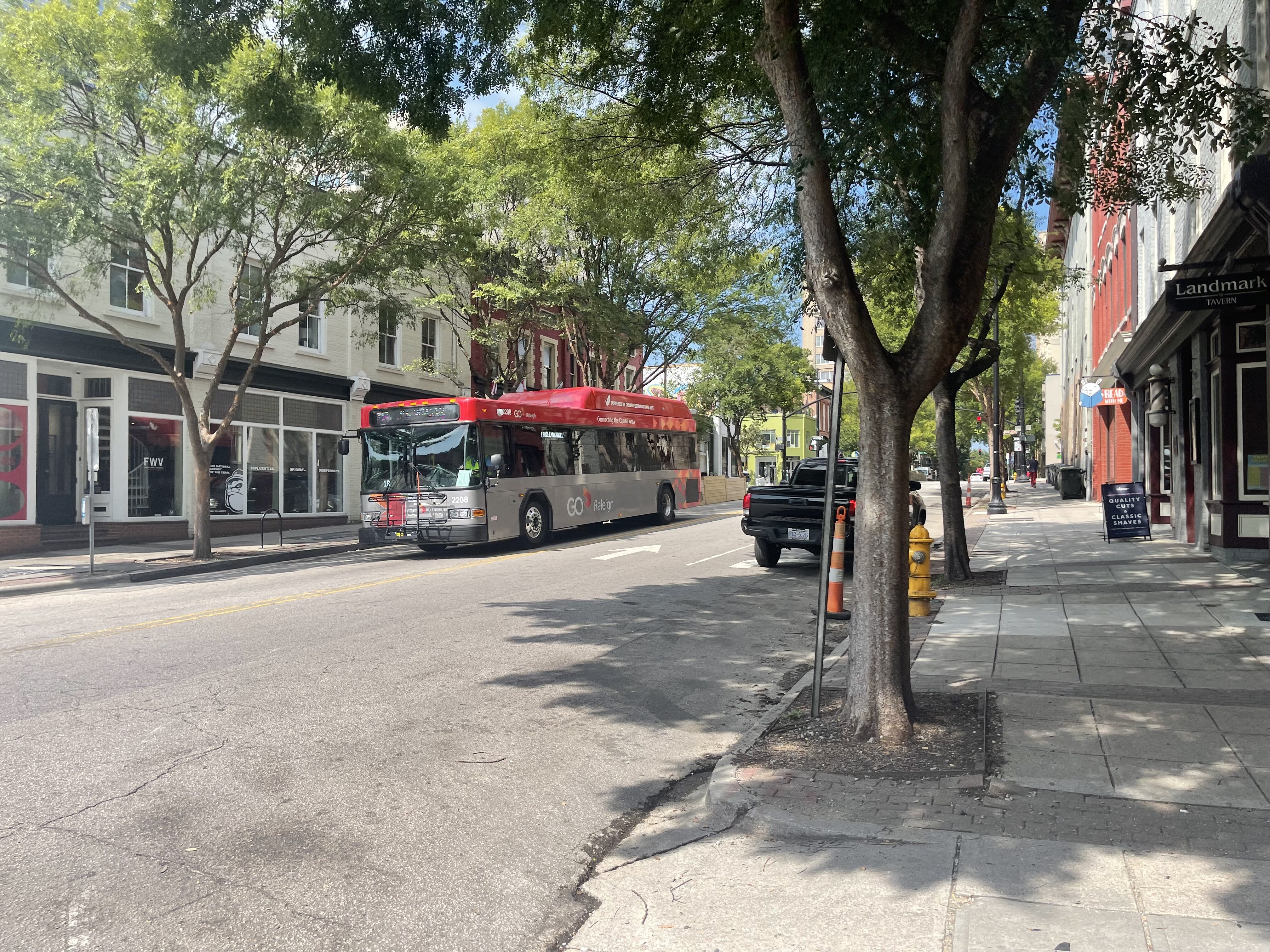Walkability is in demand, and not just in dense urban centers.
A report titled Foot Traffic Ahead by the Center for Real Estate and Urban Analysis found that demand for walkability is significant both in downtown cores and increasingly in traditionally “suburban” cores of large metro areas. The trend of redevelopment in city centers and suburban town centers has been termed walkable urbanism, and it’s “on the rise in the Rust Belt, the Sun Belt, tech metropolises, government centers, and millennial magnets.” As Raleigh and the surrounding Triangle region fits into more than one of those categories, it’s no surprise that there has been renewed interest and investment in making our city and town centers more accessible without a car.
When an influx of people move to a metro area like we’re seeing happen in Wake County, this brings new money, jobs, and services along with it, which boosts the economy. As the region continues to grow, however, we are seeing more of the status quo pattern of development that leads to sprawl and makes residents dependent on cars to get to the everyday places they need to go. But it doesn’t need to be this way! Planning in another way to meet the needs of the wave of new people and businesses coming to the region while also supporting long-time residents can enhance both environmental and economic sustainability of our region.
Providing mobility options like safe walking and biking routes as well as frequent public transit to move people to and from economic centers is critical, but for a number of reasons public transportation investment has been lacking across the U.S. for several decades (for a great overview of the history of public transit in the U.S., check out this video: Why The U.S. Gave Up On Public Transit). However, there is increasing recognition that investment in public transportation options (and associated walkability and affordability measures) is a proven tool for boosting the local economy. For example, the American Public Transportation Association (APTA) reports that 87% of trips on public transit have a direct impact on the local economy, and that every $1 invested in public transportation generates $5 in economic returns.
In fact, it’s been shown that planning for non-car mobility can actually boost the economy more than traditional “business-friendly” measures. A study looking at small cities in the Midwest found that higher quality of life, which includes recreational and cultural opportunities as well as services like good public schools and transportation options, is associated with increased employment, population growth, and reduced poverty. In fact, they found that quality of life is actually more important for economic outcomes than the quality of the business environment, which includes economic development strategies like tax and labor incentives (Improving quality of life—not just business—is the best path to Midwestern rejuvenation).
One of the challenges to such investments is that more desirable or in-demand places will make them more expensive to live in. Indeed, gentrification and affordability are big topics in Raleigh’s BRT and TOD conversations. However, Mitchell Silver (formerly the NYC Parks Commissioner and then a principal urban planner at McAdams based in Raleigh) argues that doing nothing due to fear of gentrification means neglecting communities that may have lacked investment in public spaces for decades. WakeUP therefore supports the creation of public spaces and investment in civic infrastructure like transportation options to boost the local economy and promote shared prosperity and vibrant communities while also making active choices to be inclusive in our decisions and not leave folks behind.
So, what can we do to improve quality of life for Wake residents? WakeUP argues that one of the best ways to achieve this is through zoning and infrastructure investments that increase walkability and mobility options. Current zoning regulations make it prohibitively expensive or illegal to have mixed-use development. This separation of low-density residential areas from commercial areas and services has led to sprawl, the inability to get around efficiently without a car, and other environmental and social inequities. This is why WakeUP is supportive of the Bus Rapid Transit projects and associated Transit Overlay District zoning. As the Foot Traffic Ahead report said, “U.S. metros where the public and private sectors work together to adapt and deliver increased supply of walkable urban places will be the economic and social justice winners of the next generation.”
For more information about how public transportation and transit-oriented development can benefit local economies, check out the following resources:
- The economic power of walkability in metro areas | Brookings
- Economic Benefits of Smart Growth | Smart Growth America.
- How Transit-Oriented Development Benefits Local Economies | Smart Cities Dive
- Economic Impact of Public Transportation Investment | APTA
- Investing in Public Transit Systems Can Empower Workers and Transform Urban Economies, New Research Shows | World Bank


